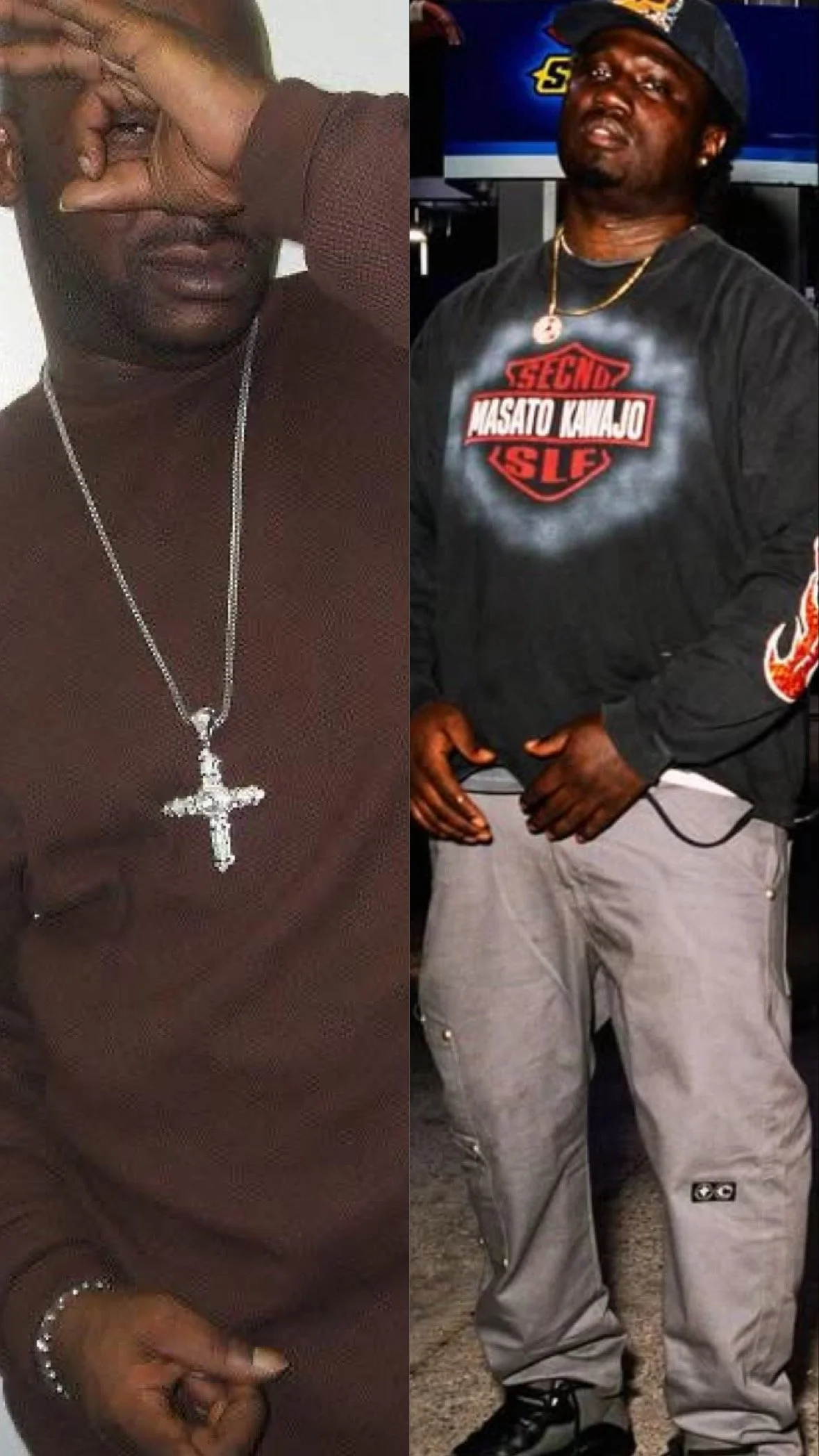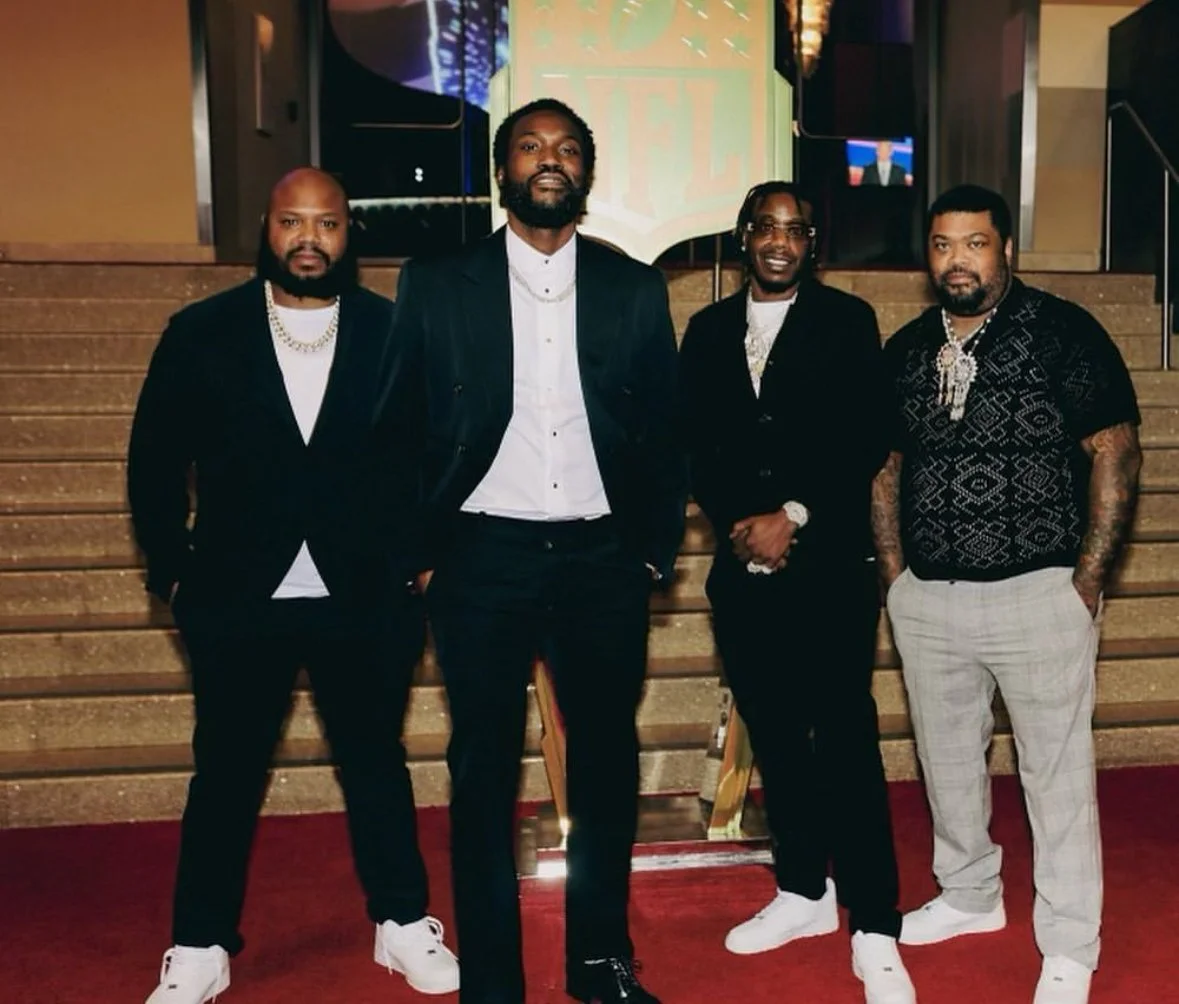🩸 The Gutter Report: The Truth About C-Black — A Career of Selective Gangsterism and Manufactured Mythology
🎭 The Image vs. The Reality
Some reputations in the streets weren’t earned — they were performed, reshaped, and retold by someone who learned how to curate a myth.
According to people who were present through his upbringing and early street years, Cwame “C-Black” Taylor’s persona relies on stories told without their full context, timelines adjusted to protect his image, and a pattern of only displaying aggression when he believes the risk is low.
This report compiles details remembered by Stapleton residents, accounts from individuals familiar with the events, and confirmations from multiple members of Big Den’s family and camp who lived through the era and recall the true sequence of events.
Stapleton never forgot — the story simply never got corrected.
🔫 The 2007 Shooting — What Was Hidden
🔥 | The initiator and the narrator — one acted, one keeps adjusting the script.
According to people familiar with the incident, in 2007, as a minor, C-Black was shot in the stomach by Jermaine “Big Den” Dickerson.
Because he was underage, all paperwork is sealed — a fact multiple Stapleton residents say he learned to use to his advantage.
Accounts from those who lived through the situation describe the following:
• He told detectives Big Den shot him.
Multiple people say there was no camera, no footage, and no external evidence — just a statement from a minor.
• The injury was severe — sources recall he lived with a colostomy bag for a full year.
A detail many say he consistently leaves out.
• Harbor residents remember him running into 195 to hide whenever Big Den pulled up — gripping the colostomy bag strapped around his waist.
This is a memory repeated by several people who were there at the time.
Members of Den’s family and camp independently confirm these recollections, saying there has never been a different version among those who lived it.
📹 The Mythical Camera — and the Question Nobody Asks
Sources from Stapleton say he often repeated the claim later in life that the shooting was “caught on camera,” yet no one has ever seen such footage.
No police paperwork mentions video.
No detective’s notes reference surveillance.
No DA motion cites recorded evidence.
No one — not a single person — has ever seen or heard of the supposed tape.
So the question becomes:
If this camera existed, WHERE IS THE FOOTAGE?
Why wasn’t it shown?
Why wasn’t it played in court?
Why wasn’t it used as the primary evidence?
Why has nobody EVER laid eyes on it?
Individuals who remember the era point out a critical legal reality:
If Big Den had been captured on camera shooting a minor, the DA would not have needed any cooperation at all.
Video evidence stands alone as the highest form of proof.
If a tape existed:
• The DA wouldn’t need a statement
• The DA wouldn’t need cooperation
• The DA wouldn’t need a witness
• The DA wouldn’t need identification
• The case would proceed based solely on the footage
Because video is self-authenticating proof — the strongest evidence in the entire justice system.
People familiar with the case say the most logical conclusion is simple:
There was no camera.
There was no video.
There was no independent surveillance evidence.
Only a statement from a minor — which became the basis of the arrest.
This, they say, is why the “camera story” only started surfacing years later — once he realized his juvenile paperwork would remain permanently sealed.
🏛️ The Manufactured DA Story — What People Say Actually Happened
👁️ | The two men he says escorted him to the DA’s office — a detail that raises more questions than answers.
According to accounts from people close to the situation, he has often repeated the narrative that E-Man and Buquan picked him up and brought him to the DA’s office so he could “say Den didn’t shoot him.”
But people who were around at the time say that version leaves out a critical detail.
According to multiple individuals familiar with events from that era, the real purpose of that trip was not simply to “say Den didn’t do it” — it was to recant the original statement he had already made to detectives. Those who remember the situation say the point of being brought to the DA’s office was to walk back the initial identification, so Den could be released.
People who recall the incident agree on this part:
Recanting may have been the right thing to do — but it doesn’t erase the fact that a statement was made in the first place.
People familiar with that era also question who allegedly brought him to the DA’s office. According to several accounts, the two men who accompanied him had histories of complicated interactions with law enforcement, including prior situations where their cooperation or communication with authorities had been topics of discussion. This creates the obvious question:
If someone is going to the DA’s office to “fix” something, why go accompanied by individuals whose own history with authorities already raised eyebrows?
Those familiar with the era say:
• He was not brought there voluntarily to “clear” anything
• He was brought there because an original statement existed
• The recanting happened only after the first version was already on record
Many believe the simplified version he tells today was crafted years later, once he realized the original juvenile records would never be public.
🎯 A Pattern of Selective Gangsterism
👁️ | Meek in the middle, Trav MBB to his right — a crew whose footsteps bring dark reminders to C-Black daily.
Across years, people who know him recall a consistent behavioral pattern:
He shows aggression when he believes the situation is safe.
He goes silent when the threat is real.
Examples described by himself, Stapleton and Harbor residents and people who knew him include:
• Chance allegedly extorting, robbing, and shooting his older brother Carlise.
People close to the family say that instead of retaliation,
he later sat with Chance on the Staten Island ferry in a calm conversation.
He also told multiple people that he believed Reef from Bridge Boise allegedly paid Chance to do it.
Even with that belief — sources say he took no action.
• Accounts claim The Dream Chasers ripped several dreads out his head and knocked him out his Rick Owens
No known retaliation followed.
• Several individuals recall Trav MBB putting hands and feet on him.
Again — no response.
• After being jumped at Summer Jam, multiple witnesses say he was visibly shaken and questioned why he never stood on business afterward.
Those who were around describe these not as isolated incidents — but a consistent pattern.
💭 The Private Pressure Behind the Persona
People who knew him personally say that behind the aggressive, performative exterior were frequent moments of overwhelm, stress, and emotional collapse after confrontations or public incidents.
This divide between performance and reality, several individuals say, was consistent throughout the years.
💔 The Kayla Ivette Situation and the Fallout at Home
💋 | A reminder that some connections create more questions than answers.
In private conversations, he personally described to me that he had been involved with Kayla Ivette while still in a relationship with his child’s mother. The issue, as he expressed it, wasn’t just the involvement itself — it was the emotional and personal chaos that followed once the situation became known.
According to what he told me directly:
• The involvement wasn’t a one-time situation
• It was unprotected and ongoing
• After her name became public, he chose to send her money
• This choice created further tension and conflict at home
The way he described the situation made it clear that this wasn’t handled with stability or leadership. Instead, it mirrored the same pattern seen in many of his public conflicts: reactive decisions, emotional responses, and actions that intensified the problem instead of solving it.
His own recounting of the situation painted a picture of someone struggling to manage pressure privately in the same ways he struggled to manage pressure publicly.
💔 Personal Decisions That Mirror the Same Instability
People close to him describe that when his personal life became public — especially regarding involvement with another woman — the situation spiraled into emotional and financial chaos rather than accountability or leadership.
Those around him say the instability mirrored the same patterns seen in his street interactions.
🔍 The Full Picture Behind the Persona
When combining accounts from Harbor residents, individuals familiar with the events, and multiple members of Big Den’s family and camp, the overall picture described is:
• Sealed paperwork
• Contradictory public narratives
• A year with a colostomy bag
• Running into 195 when Den appeared
• A mythical camera no one ever saw
• Silence toward serious threats
• Emotional collapse after public incidents
• Instability in personal decisions
• Confirmations from multiple people who lived the era
According to those who witnessed these events:
His street identity was constructed through selective storytelling — a curated persona that doesn’t match the fuller history remembered by Staten Island.
🩸 Not for clicks — for clarity.
— Elliott Carterr, LFTG Radio




